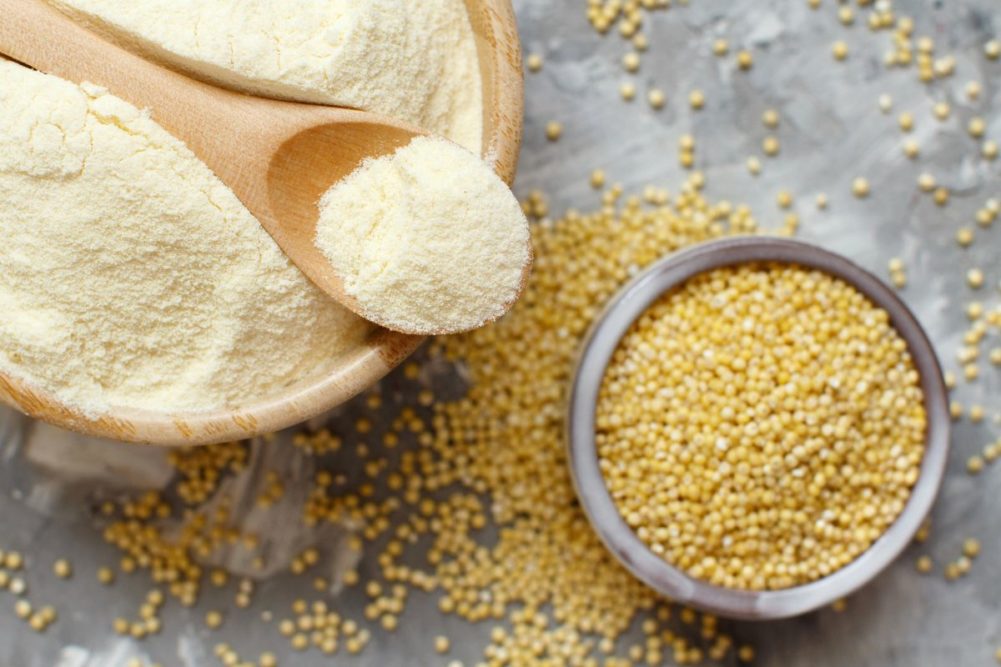KANSAS CITY, MISSOURI, US — The United Nations called 2013 the International Year of Quinoa, and sales of the pseudograin and products containing it have enjoyed strong growth since then. A decade later, could the same scenario play out for millet? The United Nations has dubbed 2023 the International Year of Millet, hoping to raise awareness of its nutritional benefits and its resilience in difficult climate conditions.
“We anticipate the UN’s declaration will inspire consumers in regions where this grain isn’t as common to try new recipes with this nutrient-packed ancient grain,” said Matthew Schueller, director of marketing insights and analytics for Ardent Mills, Denver, Colorado, US. “It’s already a staple in India and Africa and is one of the world’s oldest cultivated crops. We’ve seen how quinoa’s popularity has increased dramatically over the last decade and expect millet to follow in its footsteps.”
Millet has been found at archaeological sites over 7,500 years old in Asia and Africa, according to the Whole Grains Council, Boston, Massachusetts, US, but cereal crops with higher yields, including rice, corn and wheat long ago replaced it. Developing countries today produce 97% of millet globally. Millet remains a staple crop in some semi-arid regions like India, Nigeria and the Niger. The drought-resistant grain is used to produce injera flatbread and is popular in birdseed. More than half the millet in the United States is grown in Colorado, and it also is found in Wyoming, Montana and the Dakotas, according to the Whole Grains Council.
“Millet is a versatile gluten-free grain with a mild flavor that can be used whole as a topping or as an inclusion in traditional or gluten-free multigrain style bread, buns and rolls,” said Matt Goldstein, product specialist for Ardent Mills. “As a topping, it adds a unique and satisfying crunch to bread. As a flour, it’s popular in gluten-free bread, wraps and flatbreads.”
He added millet provides a good source of fiber along with thiamin, riboflavin and niacin.
Dakota Specialty Milling, Fargo, North Dakota, US, has produced flatbread prototypes using millet flour at percentages less than 10% of the total flour, said Seth Cox, director of product development and research.
“For gluten-free sweet goods, we’ve been able to use millet and millet flour at percentages higher than 20%,” he said. “Including millet in a whole grain mix has seen the largest increase recently. This is especially true for toppings that may have used sesame previously.”
The US Food and Drug Administration has named sesame as the ninth major allergen, meaning food companies are mandated to declare the ingredient on food labels starting Jan. 1, 2023.
“We are unable to parse what is driving consumer interest, but we do see a small but growing interest in millet,” Cox said. “With sesame being declared an allergen, we see millet being selected as a replacement for a similar appearance.”
Millet’s texture and taste are considered a positive by most but not all consumers tested, Cox said.
“Some sprouted millet grain we’ve tested had a milder and sweeter taste as well as more tender crisper texture compared to a harder crunchy texture of the non-sprouted grain,” he said.
Quinoa became a bigger player at Dakota Specialty Milling and the entire US food industry over the past decade.
“Quinoa went from a very small volume to one of our top three specialty grains being processed at Dakota Specialty Milling,” Cox said.
Schueller said, “Quinoa, specifically, has experienced an explosive growth trajectory in the North American market, growing at a rate of 19.2% per year since 2010. The UN’s declaration helped quinoa gain a global presence and assert itself into modern consumer diets.”
He pointed out US new product launches including quinoa doubled from 2013 to 2014, according to Innova Market Insights, Arnhem, The Netherlands. Recent findings from an Ardent Mills/Cargill IngredienTracker found 65% of consumers claimed to be familiar with quinoa.
Avocados, high-fiber wheat flour and spelt are some other ingredients that could spark bread category sales.
Anthony & Sons Bakery, Denville, New Jersey, US, recently introduced avocado seven-grains bread, a 24-oz loaf designed for foodservice or retail. Sunflowers, oats and crack wheat are among the seven grains. An exterior crust of the seven grains enrobes the loaf. Ripe avocados are added to the flour blend as well as guacamole spices.
Keto-certified flour blends from Ardent Mills are derived from wheat and designed to work on existing equipment and processes, Goldstein said.
“Our portfolio of flour blends includes varieties formulated for a wide variety of baking applications,” he said.
Rice, sorghum and spelt are other ingredients with potential to boost bread sales.
“Rice and sorghum flours are both strong ingredients in the alternative grains market and are perfect for gluten-free bread,” Schueller said. “Additionally, the popularity of spelt among consumers is growing. Spelt is becoming a popular global grain in new bread products today, with 41% of consumers saying they are interested in trying spelt (according to Mintel). As consumer preferences continue to change, we anticipate even more shifts in the alternative grains space in the next year and beyond.”
Bay State Milling Co., Quincy, Massachusetts, US, offers HealthSense high-fiber wheat flour that delivers up to 10 times the amount of dietary fiber found in traditional wheat flour, according to the company. Derived from high-amylose wheat the fiber in the flour is resistant starch. HealthSense wheat flour is available to North American food manufacturers.




